Ruth Asawa’s works are popular for a reason, they are ethereal and beautiful. They are also fragile due to the nature of being woven metal. She has provided and excellent HOW TO guide for her most difficult works, the hanging basket forms. I care to preserve all cultural significant objects, they could be in-hand OR in your hands. Either way, I want to preserve Ruth’s works. Perhaps you have an Asawa in your collection and no instructions to work from. You could “go for it” and be as careful as can be or read on and preserve Ruth’s works to the best possible degree. In the interest of having every and all art handling instruction manuals in one place (museumtrade.org) it is provided here.
Art handlers, art preparators, and museum technicians please follow up with manuals you may have lying around your shop or desktop. Any and all artists are welcome. How cool will it be when we have “all” of them here. The library of care and handling instructions, new works and ancient in one place.
And now, onto Ruth’s words (or at least the estate’s words):
Sculpture Handling
Ruth Asawa’s iconic, large looped wire sculptures require special handling. Only qualified art handlers should do this work.
Sculpture Facts
They are fragile even though they are made of flexible wire.
They are not collapsible. Once the wire loops bend, they stay bent until they are conserved to their original form (and rebending wire can affect patina).
They are not heavy. Small sculptures can weigh only a few pounds. Longer, bulkier pieces can weigh between 20-35 lbs. The largest pieces may be only 50 lbs.
The safest position is vertical, suspended by a hanging wire and swivel at the top of the sculpture.
The Best Art Handlers We’ve Observed
Have good flexibility and physical agility. These two traits are more important than strength since the sculptures are reasonably lightweight.
Work as a team and are willing to take the time to read these instructions.
Rehearse how they will move the sculpture in advance, with ladders (or lifts) in position to reduce the amount of time a sculpture must be carried.
WARNING to ART HANDLERS
Never rest a sculpture on the floor. This may cause the larger, round lobes to become deformed.
Never pick up a sculpture without knowing exactly where it will hang and exactly how it will get to the hanging hook.
Always wrap the narrow necks with tissue paper and bubble wrap before attempting to move the sculpture.
Do not squeeze the necks, cradle them securely, but gently.
Never move an Asawa sculpture by holding the larger, round lobes.
Take particular care to protect lobes with interior forms, as these are so much more difficult, if not impossible, to conserve.
When moving the sculpture either vertically or horizontally, never allow the lobes to collapse into each other (or jam up). The suspension should be maintained so that the lobes do not collapse up or down into one another.
This is a partial list.
Then onto Ruth Asawa’s lengthier document, which is also attached if you want to print it, or you can simply open up this webpage on a tablet or phone. The point being that you’ll probably want this with you during installation time.

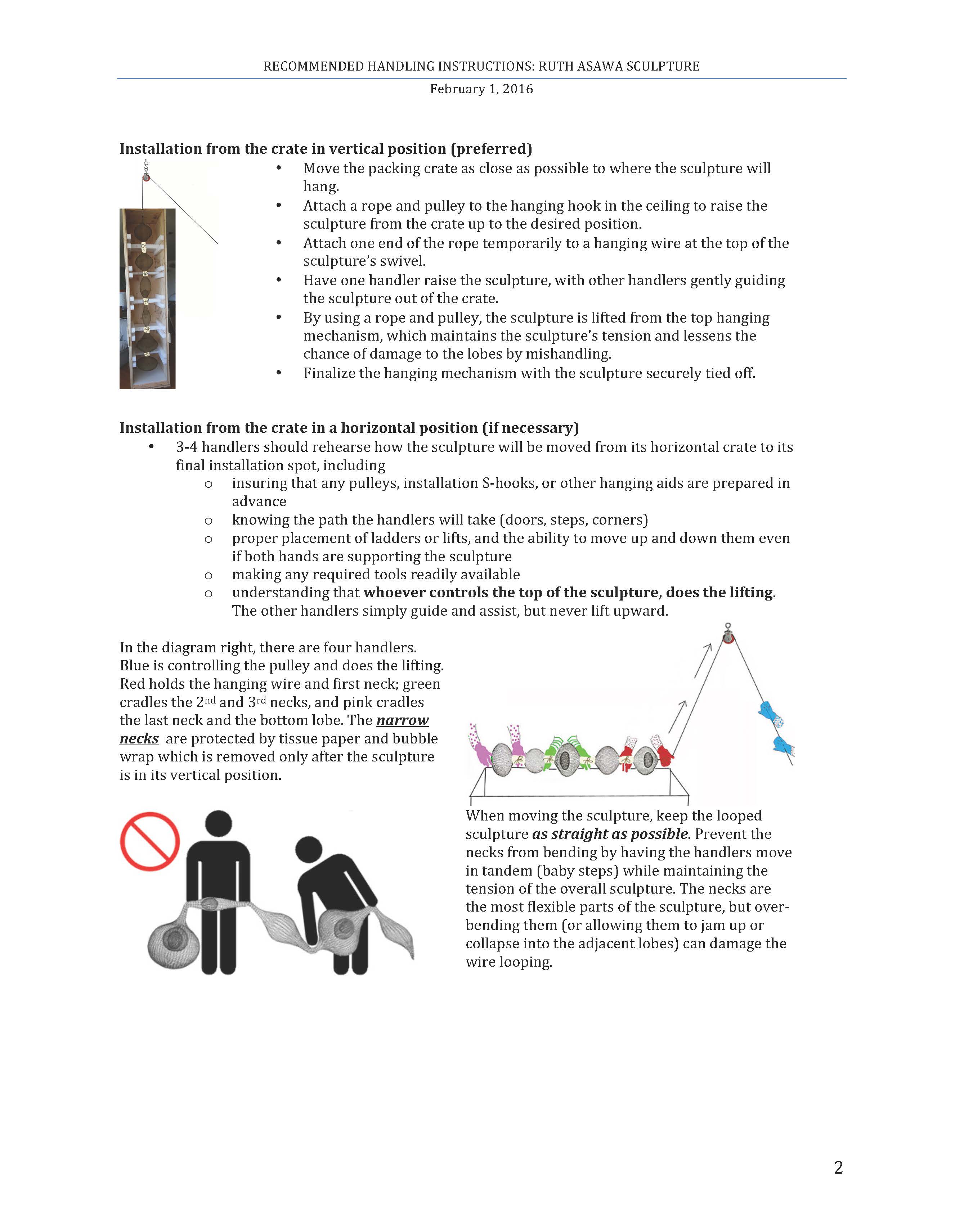
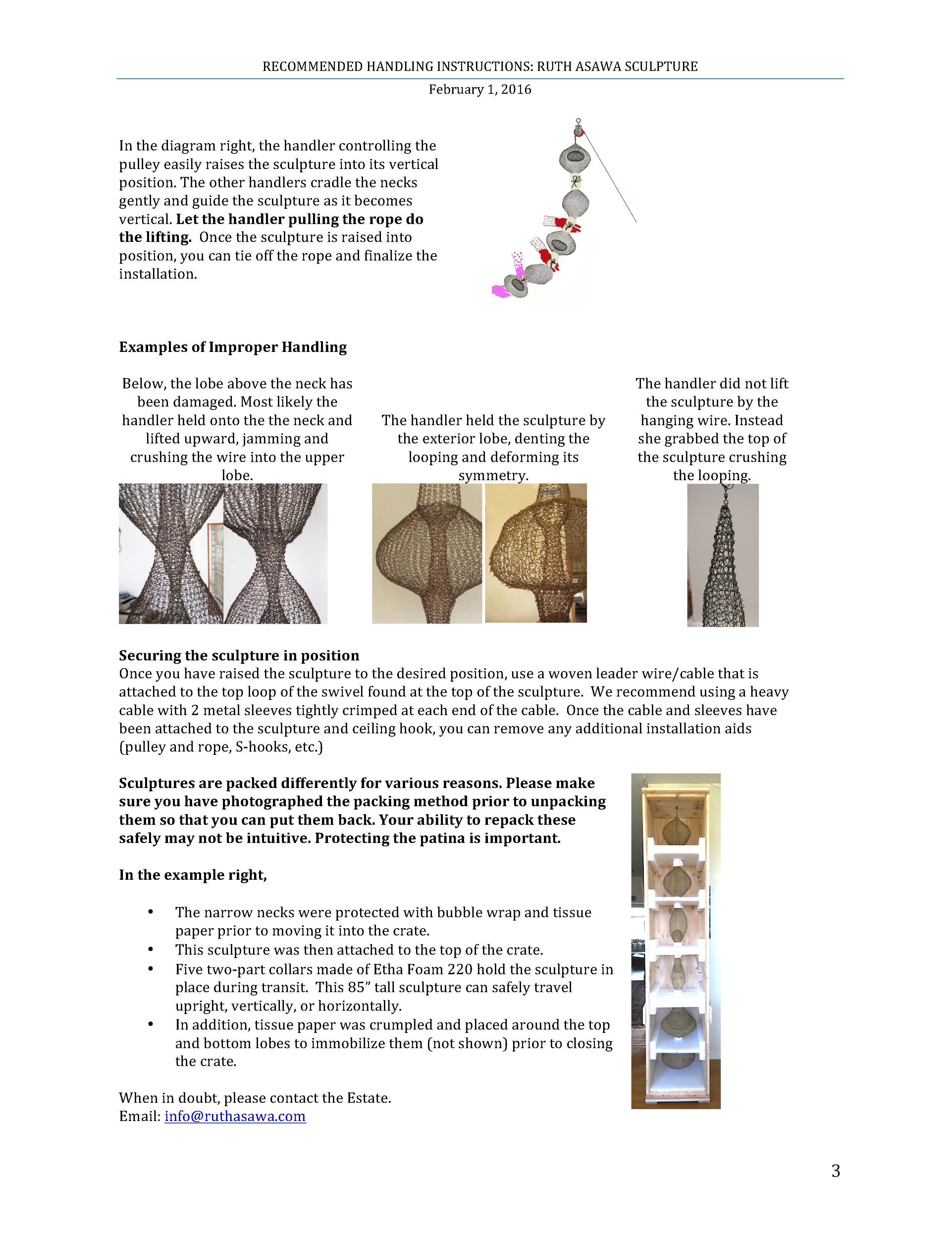
Featured image credit: CC BY-SA 4.0
- File:Ruth Asawa’s Untitled (S.563, Hanging SIx Lobed Form with Two Interior Spheres), 1956.jpg
- Created: 2017-09-26 12:13:38


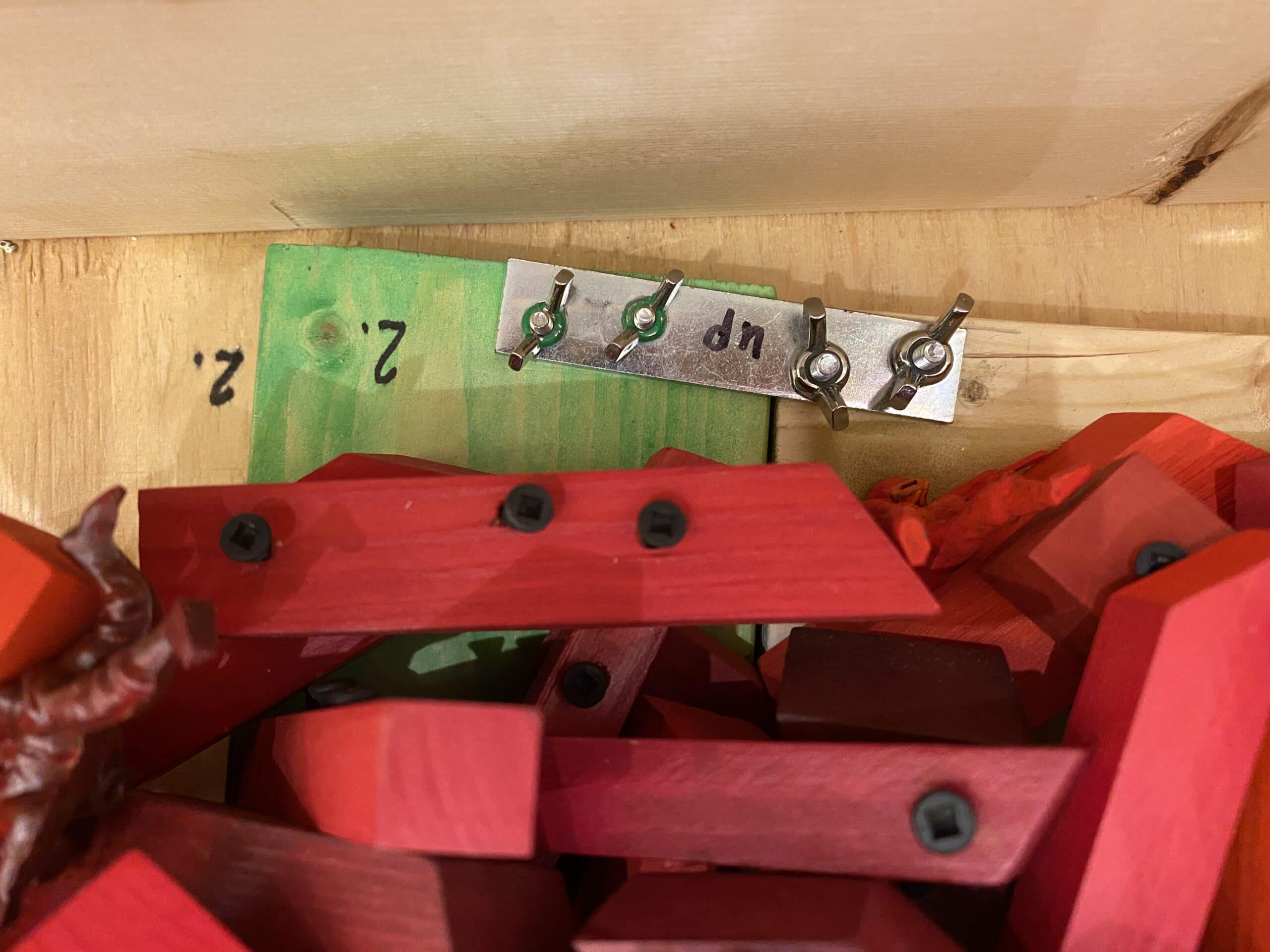
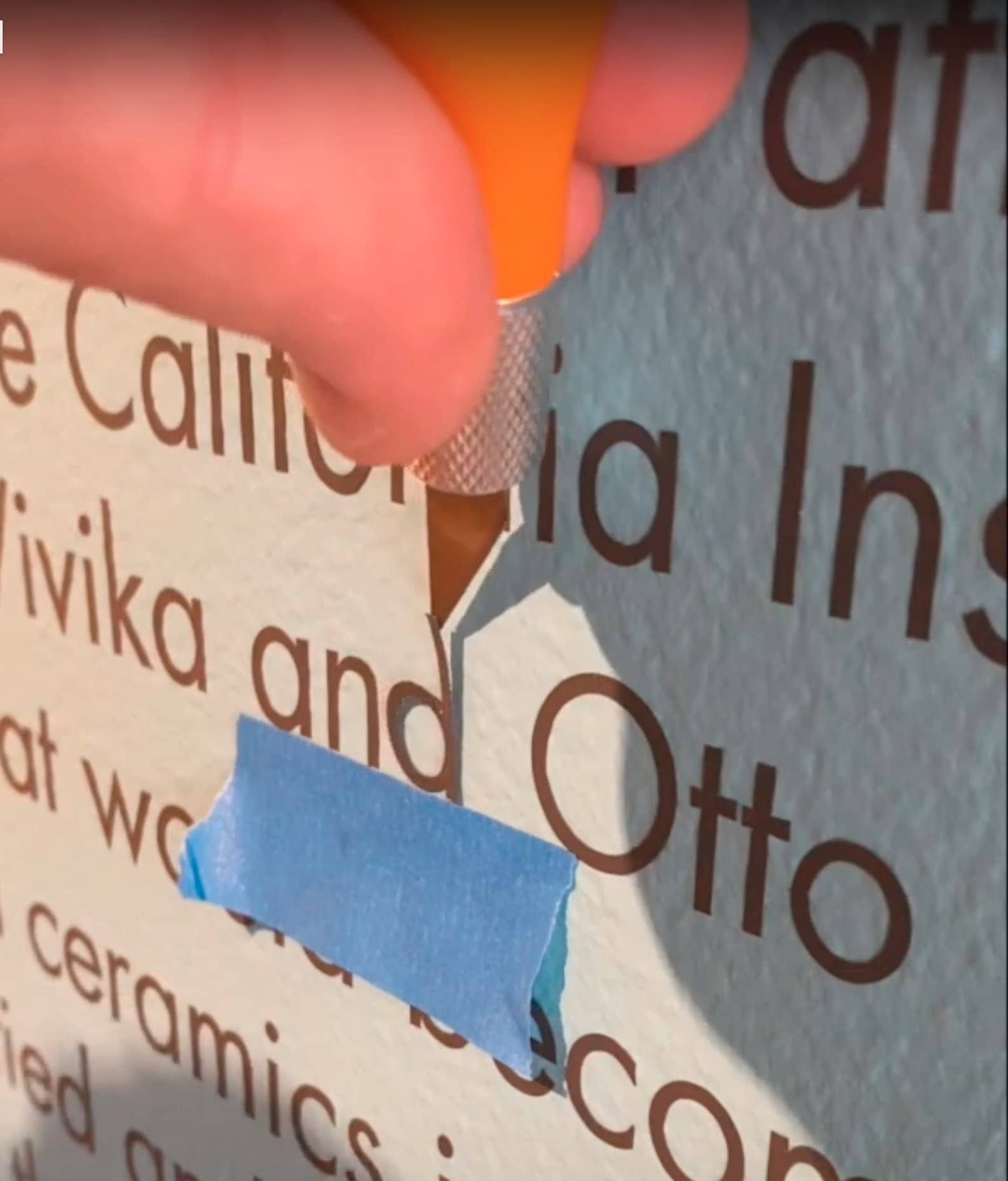

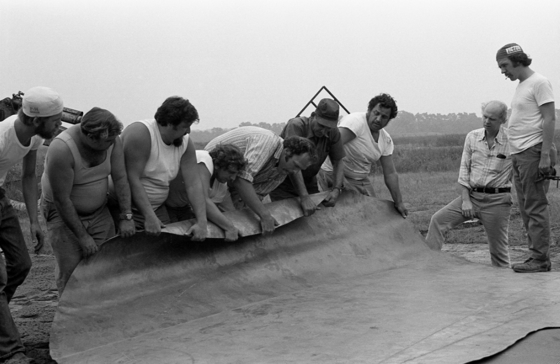
Do any of you have tips and tricks when handing Ruth’s works? Something not covered here? Pictures from your install? Share it with the community…